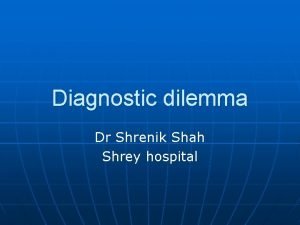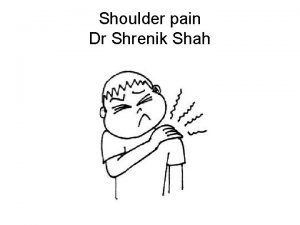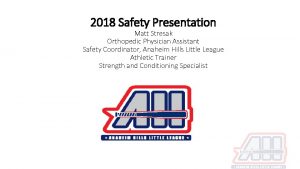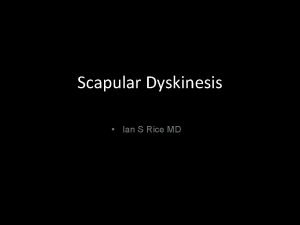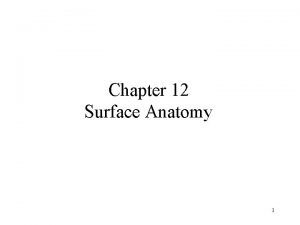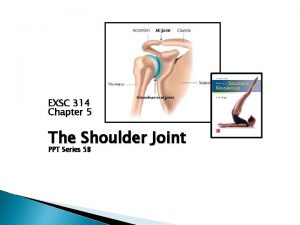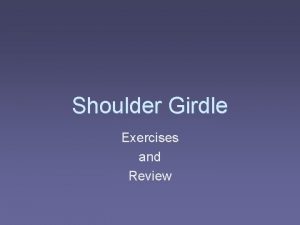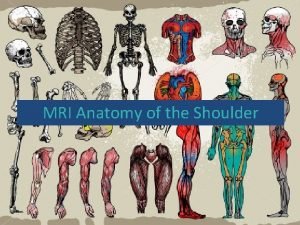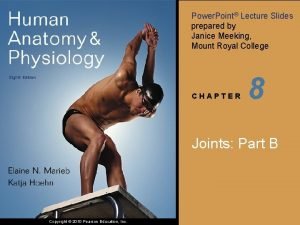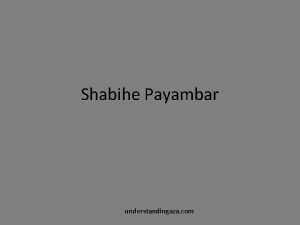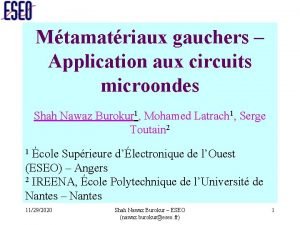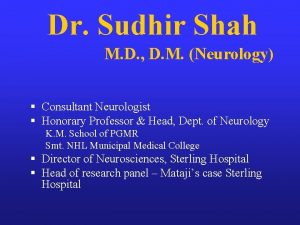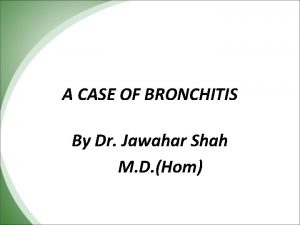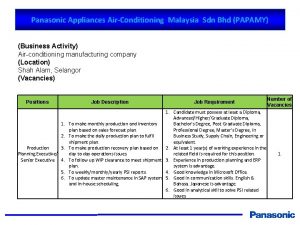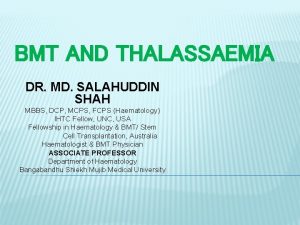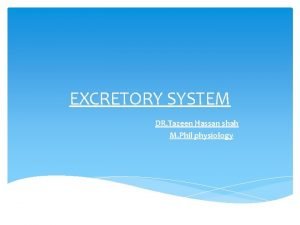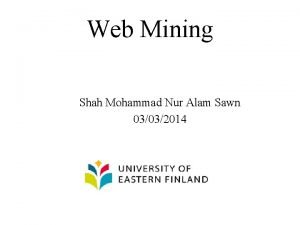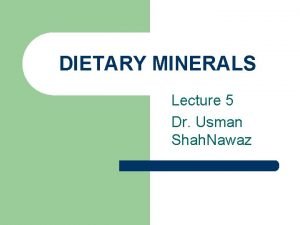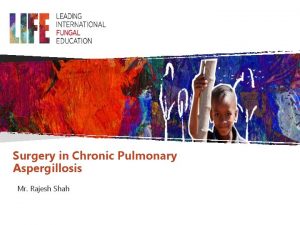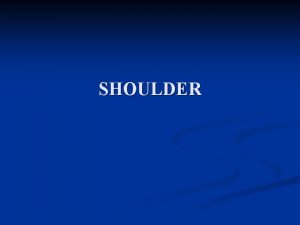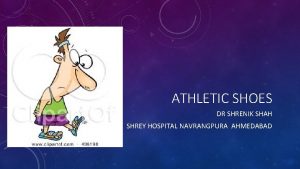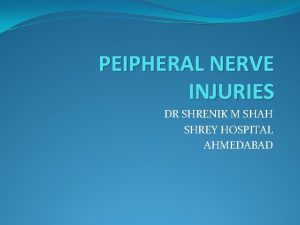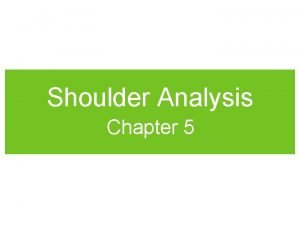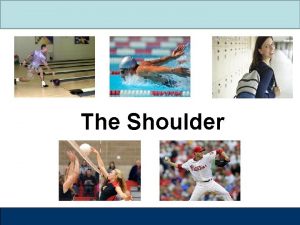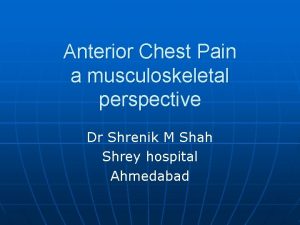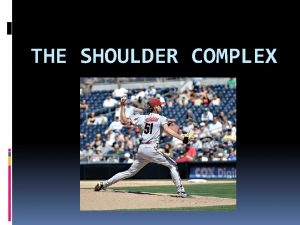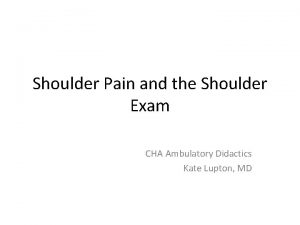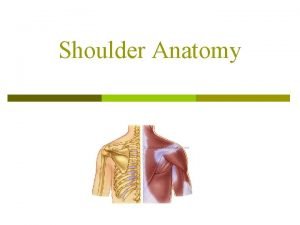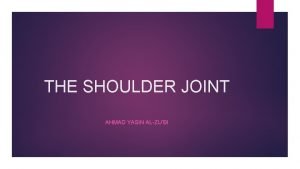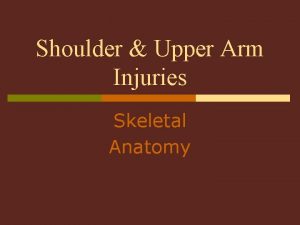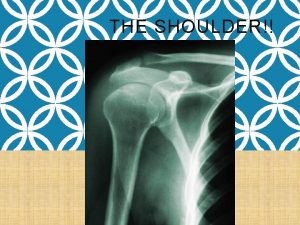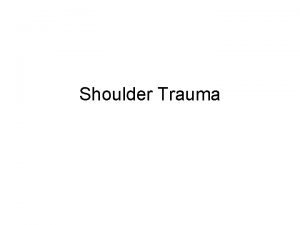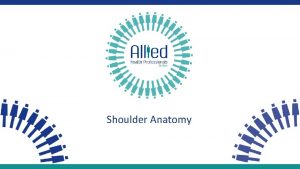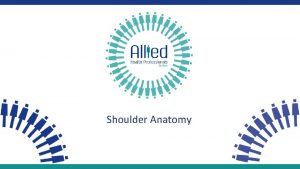Shoulder pain Dr Shrenik Shah Overview Anatomy Clinicopathoradio




























- Slides: 28

Shoulder pain Dr Shrenik Shah

Overview • Anatomy • Clinico-patho-radio correlation • How to manage day to day shoulder problems? • Promising modality RSWT

Anatomy • 1. 2. 3. 4. 4 articulations Sterno-clavicular Acromio-clavicular Humero-scapular Thoraco-scapular

Rotator cuff

Rotator cuff • • Subscapularis Supraspinatus Infraspinatus Teres minor

Range of motion • Elevation-0 -160* • External rotation- 0 -60* • Internal rotation –thumb reaches upto spinous processes thoracic 6 -8 • Adduction – crossbody • Abduction- 0 -170* • Flexion- 0 -170* • Extension- 0 -30*

Impingement syndrome • Pain on greater tuberosity impinges on to acromion • Pain on overhead motion • Sleeping on affected side • Night pains

DIAGNOSIS • History • Clinical exam- tests – Hawkins – Neer – Jobe • Xray • Usg • MRI

x-rays

Usg and MRI

Impingement etiology rotator cuff tears overuse Outlet stenosis instability degeneration extrinsic intrinsic

Supraspinatus tendinopathy

Rotator cuff tears

Rotator cuff tears • Etiology – Degenerative – Increasing incidence with age – Symptoms sometimes start with a trivial trauma – Should be diagnosed within 3 weeks – Treated early

Arthroscopy

Partial rotator cuff tear

Massive tear of rotator cuff

Xray

Glenohumeral arthritis

Shoulder arthroplasty

Frozen shoulder Adhesive capsulitis • • • A specific entity Unknown etiology Women > men 40 -60 years Risk factors – DM, x 5 more – Thyroid diseases – Cervical disc disease

Stages of frozen shoulder 1. Freezing: pain ++ lose ROM 6 weeks to 9 months 2. Frozen: pain decreases but stiffness+ 4 -6 months 3. Thawing: ROM slowly improves 6 months to 2 years

Treatment • • • Drugs- analgesics and NSAIDs, etc Steroid injections Physical therapy Manipulation under anesthesia Arthroscopic release ESWT/ RSWT


Pre ESWT

Post ESWT

CONCLUSION • Shoulder needs both clinical evaluation and imaging to arrive at a diagnosis. • Plan of treatment: early intervention can prevent unavoidable sequelae – Rotator cuff tear arthroapathy – Small lesions triggering adhesive capsulitis • Noninvasive RSWT works in most patients – Reduces suffering to great extent – Decreases rehab time – Restores early motion

WWW. ESWTINDIA. COM
 Shrenik shah md
Shrenik shah md Dr shrenik shah
Dr shrenik shah Little league shoulder pain location
Little league shoulder pain location Medial and lateral scapular winging
Medial and lateral scapular winging Pms or pregnancy
Pms or pregnancy Mad pain martian pain
Mad pain martian pain Sore breasts before period
Sore breasts before period Shoulder surface anatomy
Shoulder surface anatomy Muscles of shoulder joint ppt
Muscles of shoulder joint ppt Scapula exercises bodybuilding
Scapula exercises bodybuilding Shoulder anatomy
Shoulder anatomy Is type 1 acromion serious?
Is type 1 acromion serious? Uniaxial
Uniaxial Shabihe payambar
Shabihe payambar Riya saha shah
Riya saha shah Rachna shah md
Rachna shah md Shah nawaz burokur
Shah nawaz burokur Dr sudhir shah ahmedabad
Dr sudhir shah ahmedabad Dr jawahar shah homeopathy
Dr jawahar shah homeopathy Shah xhfpsxm
Shah xhfpsxm Panasonic papamy 2
Panasonic papamy 2 Dr salahuddin shah
Dr salahuddin shah Glomerular colloid osmotic pressure (gcop) is created by:
Glomerular colloid osmotic pressure (gcop) is created by: Nur alam shah
Nur alam shah Dr usman shah
Dr usman shah N.a. chauhan v. n.k. shah
N.a. chauhan v. n.k. shah Hemant shah md
Hemant shah md Rajesh shah thoracic surgeon
Rajesh shah thoracic surgeon Dr vaidehi shah
Dr vaidehi shah
